Family History
Family Heirlooms: 19th Century Photographs
May 13, 2012 by ramona
Filed under Articles, Family History, Latest News, Preserving Your Family Tree
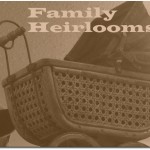 Often making a journey across time and continents, family heirlooms are a solid physical connection to a very personal ancestral past that tend to hold memories, which resonate deep within us.
Often making a journey across time and continents, family heirlooms are a solid physical connection to a very personal ancestral past that tend to hold memories, which resonate deep within us.
Those who have held their great-grandmothers wedding dress or read the letters written home from a relative who served in a war understands the deep link felt across the generations. One truth shared by all family treasures is that… it is the stories that accompany them that give them the greatest meaning and tie us to our generations past.
Sadly, sometimes the objects remain while the stories are lost. Genealogically this can be a great opportunity to discover a new family history story or ancestor. If you have, an heirloom that has become a bit of a mystery an investigation may be in order. The type of investigation you conduct will likely depend on the object you are investigating. While family heirlooms are made up of every object imaginable, from jewelry to family bibles. Often the photographs pose the most problems…particularly very early ones.
19th Century Photographs
The first step in solving the puzzle of a mysterious early period photograph is deciding what type of photo you have. A difficult task with these three photo types of the 19th century.
Daguerreotype:
A good way to decide if it is a Daguerreotype is to hold a piece of paper over the surface and see if the image is reflected in reverse. Additionally, Daguerreotypes are often tarnished around the edges of the picture. If it is a Daguerreotype is will date from 1839-1860.
Ambrotype:
Ambrotypes are often hand tinted. To figure out if what you have is an Ambrotype carefully remove it from the case and hold it up to the light. Ambrotypes were printed on glass so you should be able to see through it. Another clue is to look for any cracks or peeling as another hallmark of the Ambrotype is the black paint used to process the picture. Ambrotypes date from 1854-1865.
Tintype:
It can be hard to tell the difference between a Tintype and an Ambrotype. The only way to be certain is to hold a magnet near it. Tintypes were made of a very thin iron and should be attracted to the magnet. Tintypes were common during the civil war and date from 1856-1920.After you have determined the type of photograph, you may need to track down its geography. A hint you may find helpful, is through the clothing worn by the people in your photograph. Clothing, accessories and hairstyles may be great hints for women, while uniforms can be a dead give away for men. All can help you to zero in on the country or origin. Once that is determined, the next step is to search for period photographers from that country. Several indexes by country list photographers so you should not have too much trouble once you know the photo type.
Additionally, some early photographers may have developed an identifiable style that can be helpful in tracking them down. For example, there may be preferences in the manner which subjects are posed (seated or standing), or backgrounds and props used may offer some clues. This process can be very time consuming, as it is a matter of searching and comparing your photo to the ones found in your search. Even at that, be cautious about your conclusions.
Solving the mystery of your family heirloom can be fun and rewarding. Better yet, it may help flesh out your family history, add new branches to your family tree and fill out another space on your family template. All good reasons to start your detective work A.S.A.P.
If you have a mystery, post it in the Ask A Genealogist forum, or share with us how you solved a mystery on the Discovery Panel and tell us how you did it. Genealogy Beginner would love to hear about your family treasures and heirloom stories.
Genealogy Quotes: In the Words of our Ancestors
May 8, 2012 by ramona
Filed under Articles, Family History, Latest News
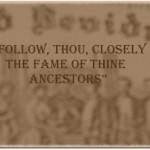
Family name, lineage, bloodline, pedigree, family tree and genealogy are all words that resound with a wish to be remembered and a desire to honor our forebears.
Our desire to celebrate our ancestors has possibly been around as long as we have and so have genealogy quotes, proverbs and sayings.
From the “begats” of the Christian bible that trace the lineage of Jesus, to the significance of “Word Fame” to the Vikings. The importance placed on our family trees is reflected in proverb, archaic literature and the current popularity of websites dedicated to genealogy quotes. Just type the phrase “Genealogy Quotes” into Google and you will come up with 11,600,000 results.
Wise words such as this ancient Gaelic proverb:
“Follow, thou, closely the fame of thine ancestors” (lean-sa dlùth ri cliù do shìnnsear) is perhaps one of the oldest recorded Western European genealogy quotes and one that continues to inspire family history hunters.
If you are in need of some inspiration or just love to reflect on the words of wisdom left by past generations – about past generations. You are going to love Genealogy Beginner’s list of :
Genealogy Quotes: In the Words of our Ancestors
“Distinguished ancestors shed a powerful light on their descendants, and forbid the concealment either of their merits or of their demerits”
Gaius Sallustius Crispus (86 BC – 35 BC)
“He who boasts of his ancestry praises the merits of another”
Seneca (4 BC – 65 AD)
“It is indeed a desirable thing to be well descended, but the glory belongs to our ancestors”
Plutarch (45–120 CE)
“To forget one’s ancestor’s is to be a brook without a source, a tree without root”
Chinese Proverb
“The mark of a Scot of all classes [is that] he … remembers and cherishes the memory of his forebears, good or bad; and there burns alive in him a sense of identity with the dead even to the twentieth generation.”
Robert Louis Stevenson (1850-1894)
“Cattle die, kinsmen die, one day you yourself shall die, but the reputation of the dead never dies.”
Havamal
“He who has no fools, knaves, or beggars in his family was begot by a flash of lightning”
Old English Proverb
“We need to haunt the house of history and listen anew to the ancestors’ wisdom”
Maya Angelou
“People will not look forward to posterity, who never look backward to their ancestors.”
Edmund Burke (1729-1797)
Feeling inspired? If you want to learn genealogy start with Genealogy Beginner
A Graphic Family in History
April 16, 2012 by ramona
Filed under Articles, Family History, Latest News, Preserving Your Family Tree
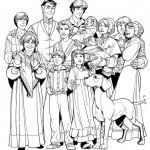 Family History books come in all shapes and sizes however I am not sure many genealogists ever expected to see one in the form of a graphic novel. The Loxleys and the War of 1812 is a book that records a monumental chapter in Canadian history through the premise of a family history.
Family History books come in all shapes and sizes however I am not sure many genealogists ever expected to see one in the form of a graphic novel. The Loxleys and the War of 1812 is a book that records a monumental chapter in Canadian history through the premise of a family history.
The idea to use a family tree to tell the story of the War of 1812 belongs to British expat, Alexander Finbow. Digging deep into letters and journals, Finbow researched families living in Upper Canada during this period in history. However, unable to settle on a single family the “Loxley’s” became a fusion of stories from several pioneering families.
The graphic novel is a factual telling of the war through the “Loxleys” a fourth generation Canadian family who are located in the Niagara Peninsula. Having left America following the American War of Independence, readers follow the family through the journals of “Aurora Loxley” who diligently records the involvement, trials and struggles of her family as they are thrust back into violence when America declares war on Britain and the Canadas.
A collaboration of artists, writers and historians The Loxleys and the War of 1812 is published by Renegade Arts Entertainment, written by Alan Grant with a summary by Canadian Military historian Mark Zuehlke, with illustrations by Claude St. Aubin and Lovern Kindzierski.
Although genealogically the story is indeed fictional, the concept of bringing a family history book to life through a graphic novel is intriguing and promises to be an enjoyable read for all interested in history and genealogy.
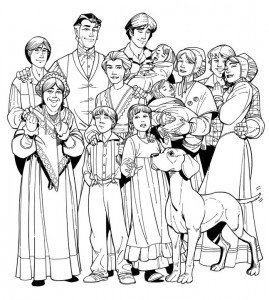
Image Courtesy of Claude St. Aubin with permission from Alexander Finbow
Publishing Your Family History Book
February 18, 2012 by ramona
Filed under Articles, Family History, Latest News, Preserving Your Family Tree
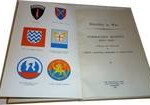 Early in January, our facebook friends told Genealogy Beginner about the exciting genealogy projects you had planned for 2012. Top among your projects was publishing your family history book.
Early in January, our facebook friends told Genealogy Beginner about the exciting genealogy projects you had planned for 2012. Top among your projects was publishing your family history book.
Genealogy Beginner thinks publishing your family history is an outstanding goal and we want to support you in your efforts. With that in mind, here is some information that will bring you closer to reaching it.
Publishing your family history book is a big step. There is more to it than simply sending it to the printer. Before you get to that place, you need to consider a couple of important points.
Copyright
Copyright your book! Even though, under the Berne Convention you automatically own copyright. Copyrighting your book it will guarantee your intellectual property rights and protect your from copyright infringement. If you are thinking that it sounds like a bit of a hassle, do not worry copyright it is a lot easier than you may have imagined.
In order to copyright, your book you will need to send three items in to the office where you wish to register.
The fees will depend on the office (country specific), to which you are sending them and it is important that you send all items in the same envelope. There are several offices and a quick Google search will point them out to you.
Do you know your options when it comes to publishing?
You have several options when it comes to publishing your family history book. Genealogy Beginner recommends the following two choices.
Self Publish
Self-publishing is probably your best choice if your book is for yourself. Self-publishing is as easy as printing out at home or sending your work in to a local printer. If you plan to print out at home, three ring binders work well for expanding your work later. However, having your work professionally printed will give you the option of having the printer do the binding.
Work with an On-Demand publisher.
On-demand publishing is a great choice if you want to offer your book for sale, either to the public or within your family. Probably the greatest benefit to on-demand publishing is that it is very budget friendly as there are no up-front costs to you.
Of course, you can choose to go with a commercial publisher or look into offering your family history book as an eBook. It will all depend on your objective.
For a list of On-demand publishers, join us on the forum “Genealogy in General”. If you have already published your family history book Genealogy Beginner wants to know about it. Stop by, join the discussion and share some tips with other genealogy beginners.
Image Credit: Inkyphoto via Photobucket
Writing Your Family History Book
January 28, 2012 by ramona
Filed under Articles, Family History, General Tips, Latest News, Lesson 3 Articles, Preserving Your Family Tree
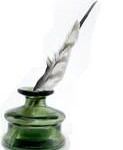 Early in January Genealogy Beginner asked our facebook friends what exciting genealogy projects you had planned for 2012. Top among your answers were writing and publishing a family history book.
Early in January Genealogy Beginner asked our facebook friends what exciting genealogy projects you had planned for 2012. Top among your answers were writing and publishing a family history book.
Genealogy Beginner thinks that is an excellent goal. To help support you in reaching it we decided to dedicate some time to providing information that will bring you closer to achieving it.
Getting Started on Your Family History Book?
Perhaps the hardest thing about writing a family history book is simply getting started. Your first step should be to decide who your family history book is for? Knowing this will help you resolve what form your family history book will take.
- Will it be a surname book, a book for yourself, are you planning it as a gift for other family members or did you want to offer it more publicly?
- Will it trace the line of a single family or are there going to be interconnecting trees?
- Do you have a set number of generations you wish to include?
- Are you dedicating it to a single ancestor?
- Will you be including graphic data such as family photographs and scans of source documents?
- Will you be collaborating with another family member?
- Will you be including stories, family lore or famous family recipes?
With the above questions answered, you will have a better idea of the type of book you want to write.
Memoire: An account of the personal histories based on the memory of the author.
Biography: A focus on one specific ancestor.
Narrative: The story of a group of ancestors or a complete family line.
Knowing the answers to these questions before you begin will help you with organizing the project. More importantly, it will keep you from becoming overwhelmed and make your project run smoothly from start to publish.
Note: Genealogy Beginner suggests, that you begin to write your book before your research is complete; for the reason that, if you are like most other genealogy researchers…your research will never be finished.
Organizing your Family History Book
Once you have settled on the form your book will take, the next logical step will be to organize your collected data. You can take several approaches to this process.
Step one:
Organize within the chronological order of your family tree beginning with the current generation. On the other hand, you may want to begin with the earliest generation you have found and work your way back to the current generation. Working in chronological order will help work through any holes you may have in your research.
Step Two:
Write a tentative outline for your story. You can include as much or as little detail as you wish, the point to remember here is to remain flexible, as you are likely to do a lot of editing along the way.
Step Three:
When you have decided on your organizational process, begin making files for each of your subjects. For instance, a master file for each family group and sub files for the individuals within the group.
Each sub file should contain:
- Cards, letters, photos, newspaper clippings and other memorabilia for that individual
- Notes on interviews
- Notes on social history (What was life like in their time, were there any historical events taking place near them etc.)
Write Your Family’s Story
Here are some basic writing tips to help get you started and keep you going.
Draw up a writing schedule
Life gets busy and when it does, it is easy to put off your project. Drawing up a writing schedule and sticking with it will help you keep your project from being placed on the back burner.
Write a Draft
All writers know that every story has a beginning, middle and end. When you begin to write, start with a draft that outlines this. Do not worry about grammar and punctuation at this point just get your outline down on paper. Later as you start your rewrite, you can make corrections and begin to include detail. Final corrections can be made when you edit.
Final Notes:
Some family members may be more private while others may simply feel strongly that some stories ought to be omitted altogether. For these reasons, the following two points should be well remembered when writing your family history.
- Be careful about including any stories that could be upsetting to your family.
- When writing your family history book keep detailed information about living ancestors out of it, unless you have their written permission to include it.
Once you have finished writing your story and before you publish, it is time to edit. Join us on the forum Genealogy in General for your final edit checklist. Don’t forget to check back with us next week for Genealogy Beginners article on publishing your family history book.
Image Credit : roonil_waslib via photobucket
A Sustainable Family Tree
January 8, 2012 by ramona
Filed under Family History, Latest News, Preserving Your Family Tree
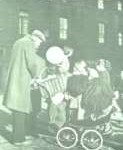 This week Genealogy Beginner attempts to unite our past and present…with hopes for a brighter future…through the wisdom of our ancestors.
This week Genealogy Beginner attempts to unite our past and present…with hopes for a brighter future…through the wisdom of our ancestors.
No one who has spent time needed to make a family tree will deny the fact our ancestors had it rough, eking out a living through total self-sufficiency. From cotters in an old world – to – settlers in a new one, it was imperative to survival that they be conservationists by nature.
Before it became a socially conscious practice or a global concern, Great, Great Grandma and Grandpa were reducing and reusing as part of their daily lives. Sustainability was not a catch phrase; it was an accepted part of life.
Perhaps their reasons for recycling are different from our own. History, shows recycling is customary in times of shortage. Even in this, there are similarities between their time and ours…the common theme; long- term survival.
How eco friendly were our ancestors?
A Family Tree of Conservationists
Water is a good place to start. In the simplest possible terms water had to be conserved as wells could run dry.
Rain Barrels:
– Collected rain water from runoff
– Stored in barrels to use at a later date
– Was used to do laundry
– Rainwater was considered excellent for washing hair (makes it very soft)
Our ancestors were also wise when it came to keeping their water sources clean and healthy. They knew how important it was to keep pollutants away from the family’s water supply. Thus, they positioned livestock and other contaminants down hill from the well.
A Greener Genealogy
We have also learned lessons from our forefathers on sustainable energy uses in our natural environment. Ancient Chinese engineer Tu Shih, immortalized in a text from 31 AD, invented a water-powered reciprocator used in the casting of iron for agricultural equipment. The short story, casters and smelters used running water to operate billows long before we developed hydroelectric dams.
Repurposing Family History
From Imperial Byzantium, throughout the Roman Empire, sailing past medieval Vikings to Victorian England and into the Great Depression; archeological and historic record proves recycling reined supreme within our predecessor’s lifetimes.
The Byzantine
In the heart of the Byzantine is the ancient city of Sagalassos (current day Turkey) where archeologists found evidence of an intensive glass recycling program.
The Romans
The Romans recycled metal turning bronze coins into statues. In addition, Romans used recycled water for their sewer systems.
The Vikings
Famed marauders immortalized in Saga, we do not think of the early Norse as being particularly eco friendly…or even friendly. However, in an 11th century site located in the city of York, England, is evidence of a makeshift recycling center. True to the Viking spirit, the site was for the reprocessing of weapons after battle.
The Victorians
The most avid recyclers, ancestors of the Victorian era provide the best examples of reduce, reuse and recycle.
· Historians commonly have a difficult time finding examples of Victorian clothing because garments were passed down from lady to maid to daughter and finally given to second hand shops.
· If your Victorian ancestors kettle had a leak it would be repaired, worn bed sheets were “sides-to-middled” (a method of repair), in addition worn collars and cuffs of clothing would be turned and the good side used.
An unsung hero of recycling, the familiar Rag and Bone Man, would go from home to home collecting:
Rags, which he would sell:
-To make Shoddy Wool (used to make military uniforms)
-Have turned into rag paper
-Be used to enrich soil for growing hops
Bone, which he would sell:
-For making glue
The Great Depression
During the depression, things needed repairing not replacing. The depression heralded a culture of making items we could not buy and everything from lumber to wire to old nails were repurposed.
Growing our Roots
With the current popularity of rooftop/balcony gardens and the backyard chicken coop it seems that we have come full circle. It would be honest to say our precursors made a practice of these things either because they did not have easy access to a grocer or because they could not otherwise afford a healthy diet. Anyone who has seen the price of organic eggs may agree, we have not come so far from our ancestors after all.
Join us on the Forums, “The Discovery Panel” for a rare peek into the past where Genealogy Beginner shares some green cleaning tips from a Victorian Era cleaning Manual.
Image Credit: des_enzano via Photobucket
Three Steps to a Genealogy Family Renunion
January 24, 2010 by Chris
Filed under Articles, Family History, Genealogy for Beginners, Preserving Your Family Tree

Ever thought of throwing a Genealogy Family Reunion? We talk about how to organize and initiate such a reunion in The Step-by-Step Genealogy Guide. It isn’t that hard when you have a few basic tips.
First of all, plan the “reunion” around a pre-arranged family gathering (weddings are great.) This way you’ll have folks in town anyway. Ask the relative getting married if they’d mind if you had an informal gathering the afternoon after the wedding (maybe at a meeting room in the hotel.) I’m sure they wouldn’t mind.
Second, don’t do it all yourself. Get a committee organized to do the work, (we have a suggested agenda for the committee in The Guide.)
Third, plan out fun activities that will get people talking and organized around genealogy. For example, ask them to bring old pictures, photo albums, or copies of the three key documents we talked about yesterday.
Family reunions are a great opportunity to complete some solid research. Go with some key questions in mind and you’re bound to make progress.
Giving Your Family Tree for Christmas
December 4, 2008 by Chris
Filed under Blank Family Tree, Family History, Preserving Your Family Tree
 The Ancestry Insider is quickly becoming one of my favorite blog spots, in a post titled “Giving Your Family Tree for Christmas.” There is an amazing wealth of information about publishing a family tree book for yourself or a family member. The best part about the post is that it was inspired by a reader’s question. (See link at the bottom of this article to visit the original post and read about a site visitor who asked a question that started it all.) Here are some highlights from the article:
The Ancestry Insider is quickly becoming one of my favorite blog spots, in a post titled “Giving Your Family Tree for Christmas.” There is an amazing wealth of information about publishing a family tree book for yourself or a family member. The best part about the post is that it was inspired by a reader’s question. (See link at the bottom of this article to visit the original post and read about a site visitor who asked a question that started it all.) Here are some highlights from the article:
Continue reading “Giving Your Family Tree for Christmas” »
An Irish Culinary Tradition – Edible Seaweeds
September 14, 2008 by Chris
Filed under Articles, Family History, Preserving Your Family Tree, Public Records
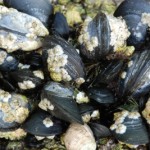 I grabbed this recipe from The Ballycastle Blog: Irish Genealogy and More. Found it so interesting I thought I’d share it with you. The time of the Great Hunger or (The Gotta Mór); Ireland 1845-7, was a bleak time in Irish history. With widespread crop failures and disease that devastated an already weakened people, seaside communities could turn to the sea and thus managed a little better. While men fished, women with their children in-tow hunted the beaches during low tides gathering the numerous varieties of shellfish and seaweeds. A species of seaweed known as Sleabhach which grows from fall to spring on rocks became a staple.
I grabbed this recipe from The Ballycastle Blog: Irish Genealogy and More. Found it so interesting I thought I’d share it with you. The time of the Great Hunger or (The Gotta Mór); Ireland 1845-7, was a bleak time in Irish history. With widespread crop failures and disease that devastated an already weakened people, seaside communities could turn to the sea and thus managed a little better. While men fished, women with their children in-tow hunted the beaches during low tides gathering the numerous varieties of shellfish and seaweeds. A species of seaweed known as Sleabhach which grows from fall to spring on rocks became a staple.
This seaweed is something many of us are familiar with in sushi dishes; you might know it as Nori; today a major Japanese crop worth millions of dollars.
Try out this old Irish recipe’ and impress your Japanese friends.
Sleabhach agus Ruacháin
(Slough-uck a-guss Roo-caw-in)
Nori and Cockles
Ingredients per individual serving
3-4 oz. Nori
15 – 20 Cockles
Butter
Milk.
Cook the Nori in milk for an hour. Cook the cockles in their own juice. If the Nori sheets have not broken up put them in a food-processor for a few moments Serve with a Nori mound in the centre, pour over it a little of the cockle juice and top it with a generous blob of butter. Surround the Nori with the cockles and serve.
I have never seen Nori or the inside of a sushi restaurant, but believe it should work. The original is delicious and cockles go particularly well with “Sleabhach” though other types of shellfish were also used. Perhaps someone who tries the recipe might post his or her culinary review.
See additional Irish family history articles and lessons learned in earlier posts below and in the archives.
This posting is from The Ballycastle Blog: Irish Genealogy and More.
…
Where to Next?
